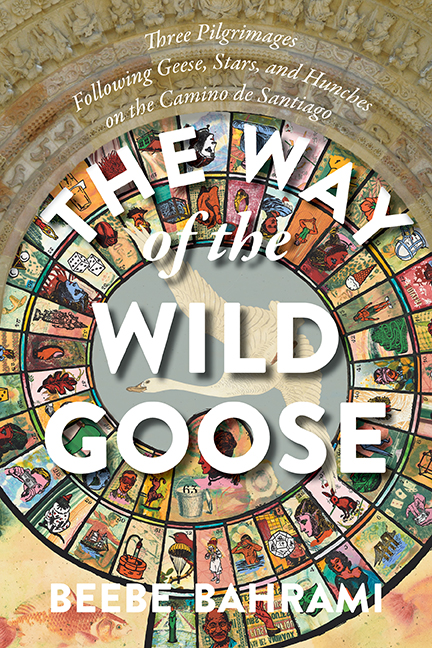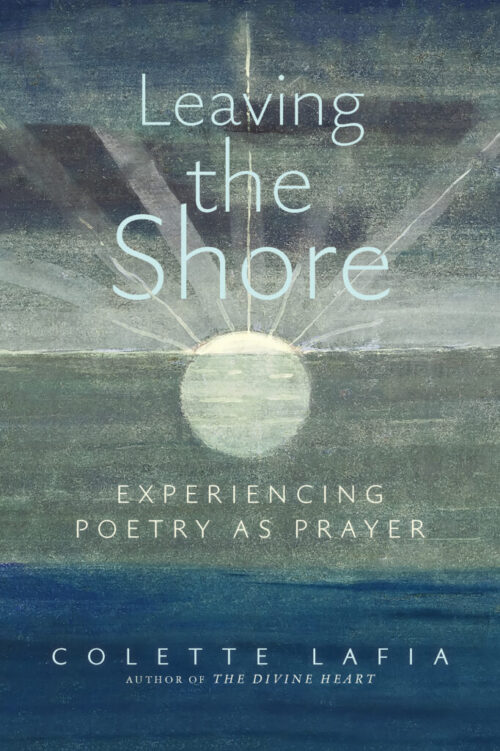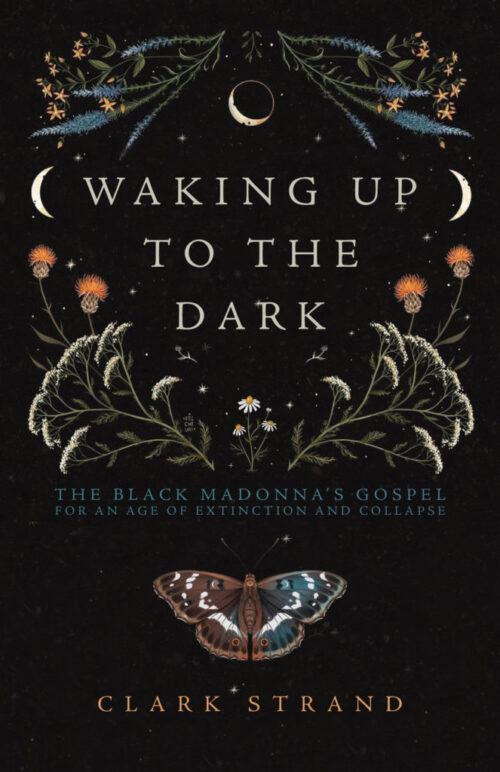The Way of the Wild Goose
Three Pilgrimages Following Geese, Stars, and Hunches on the Camino de Santiago
Beebe Bahrami
Paperback
ISBN 9781948626637
$24.00 US
eBook available
May 17, 2022
2023 Foreword INDIES Award Winner | Silver: Travel
A pilgrimage-turned-adventure story in pursuit of a pagan mystery on the Camino de Santiago across France and Spain
"In Beebe Bahrami’s The Way of the Wild Goose, a mystery, the wild feminine, and trail magic come together on the Camino de Santiago....Bahrami affirms that the Camino is more than a mere road—it’s an initiation. With skill and insight, she details the joys, challenges, and human kindness she experienced on this ‘great leyline forged from the mix of natural earth energies with the human imagination’ that became her road to self-discovery and a heart-centered life." —Foreword Reviews; starred review
With three pilgrimages across southern France and northern Spain defining author and anthropologist Beebe Bahrami’s single journey on the Camino de Santiago, The Way of the Wild Goose recounts an inner and outer journey full of wild nature, ancient roads and history, quirky pilgrims, wise and humorous locals, and mysterious folklore. It’s a compelling tale of quest, initiation, and transformation following the Way of Saint James.
The book is also a detective story that reveals an old mystery: Why is the goose associated with the medieval Camino de Santiago, and how did it come to preserve a whole universe of pagan, pre-Christian lore in one innocent symbol? Longtime trekker Bahrami decided to find out, and unknowingly catapulted herself into a true wild goose chase, unearthing a magnetically alive and meaningful long walk on the ancient roads in France and Spain—and a journey into the Self.
Beebe Bahrami is an award-winning travel writer and anthropologist known for her travel narratives, memoirs, and guidebooks. Her most recent book, Moon Camino de Santiago (Avalon Travel/Hachette, 2019), firmly established her as an expert on the Camino de Santiago pilgrimage routes in southern France and northern Spain. She has dedicated three decades to unearthing the mysteries, lore, and many-sensory experiences of this massive and ancient network of roads that are all destined for the northwest of Iberia. Bahrami is also known for her essays and articles on travel, archaeology, outdoors and adventure, food and wine, spiritual, and cross-cultural themes.
A Colorado native based in southern New Jersey, Bahrami extends her idea of home on regular, visits, semi-nomadic treks, explorations, and excavations in southwestern France and northern Spain, one of Europe’s most ancient, deeply traversed, wild, and culturally rich landscapes. Ever since she first stepped on to the Camino de Santiago in 1995, she knew she found her place in the world and has delved deeply into these ancient paths and places across France and Spain.
In addition to Moon Camino de Santiago, she is the author of several other travel books, including two travel memoirs, Café Oc—A Nomad’s Tales of Magic, Mystery, and Finding Home in the Dordogne of Southwestern France (Shanti Arts Publishing, 2016), and Café Neandertal—Excavating Our Past in One of Europe’s Most Ancient Places (Counterpoint Press, 2017), and two narrative guides, The Spiritual Traveler Spain—A Guide to Sacred Sites and Pilgrim Routes (Paulist Press, 2009), and Historic Walking Guides Madrid (DestinWorld Publishing, 2009). She also has been a writer for Michelin, including the Michelin Green Guide: Provence (2006).
Bahrami’s essays and articles have appeared in BBC Travel, Archaeology, Wine Enthusiast, The Bark, Bon Vivant, The Pennsylvania Gazette, National Geographic books, Expedition, Fodors.com, Transitions Abroad, and Perceptive Travel, among others. She is the author of travel content on Spain and France—particularly on the Camino de Santiago, Madrid, Bordeaux, Toulouse, Camino del Norte, and Aquitaine—on Bindu Trips, a travel itinerary website. She is also a journey experts with the Smithsonian Journey tours, “France and Spain’s Basque Region,” and “Across Northern Spain and Portugal,” and co-leads a sacred writing and art retreat at Flores del Camino, in Castrillo de los Polvazares on the Camino.
She maintains two blogs, Café Oc, on life in the Dordogne, and The Pilgrim’s Way Café, dedicated to exploring the world on foot and through its foods and traditions.
“A lingering historic mystery and an unexpected personal twist make The Way of the Wild Goose an entertaining, thoughtful, and valuable addition to the wonderfully digressive genre of the pilgrimage memoir.” —Gideon Lewis-Kraus, staff writer for The New Yorker and author of A Sense of Direction: Pilgrimage for the Restless and Hopeful
"A luminous, heartfelt journey. Beebe Bahrami has produced something unique: not one, but three magical pilgrim walks filled with web-footed Virgin Marys and mother goddesses, eerie coincidences, fairies, and Templar Knights—and with enough Cat Stevens, food poisoning, and scientific backup to keep it all real. Big fun!" —Rebekah Scott, author of A Furnace Full of God: A Holy Year on the Camino de Santiago
“In Beebe Bahrami’s The Way of the Wild Goose, a mystery, the wild feminine, and trail magic come together on the Camino de Santiago.
Carrying a pack filled with “just in case” items, Bahrami set out to walk the Camino, feeling “ethereal energy” emanating from the ground beneath her feet. Intense dreams accompanied her as she followed the sun’s path across the sky, looking for places marked with the sign of a goose, or its three-pronged-footprint abbreviation—places said to be imbued with spiritual energy arising from prehistoric sacred springs and wells, standing stones, and grottoes over which now-ancient chapels stand. She walked in delight, not knowing when or where she would eat or sleep, allowing synchronicities that lifted the veil between her inner and outer worlds to supply her needs.
Bahrami reveals the heart of the Camino as the heart of the fierce feminine, enshrined in folklore, legend, and the mystery of the goose. She finds evidence that the feminine divine, though dominated by patriarchy, has not been extinguished—although she notes that, by the fifteenth century, women healers were targeted as witches, as churches and states joined in their efforts to dominate and exploit the natural world and all of humanity.
Both intriguing and marked by delightful descriptions, the book links the past to the present well. Bahrami affirms that the Camino is more than a mere road—it’s an initiation. With skill and insight, she details the joys, challenges, and human kindness she experienced on this “great leyline forged from the mix of natural earth energies with the human imagination” that became her road to self-discovery and a heart-centered life.
The Way of the Wild Goose is a travel memoir that invites lingering, as well as a return to Mother Earth and her wisdom.” —Foreword Reviews; starred review
"Beebe Bahrami fills these pages with facts about history, religion, geography, and more. She is a scholar, an anthropologist, and the person you would most like to be seated next to at a dinner party…. The Way of the Wild Goose positively shimmers with enthusiasm and wonder. This book will be equally enchanting to the seasoned pilgrim and to those who may pick it up on a whim.”—Annie O’Neil, director/producer of Phil’s Camino, coproducer and participating pilgrim for Walking the Camino: Six Ways to Santiago, and author of Everyday Camino with Annie
“...Bahrami traces the goose symbolism back to European pagan goddesses and uncovers echoes of the three-pronged goose’s footprint in symbols of the Holy Trinity, finding that the goose ‘brings with it contentment, harmony, wholeness, and balance.’ Bahrami’s animated prose pulls the reader into her ambitious quest...” —Publishers Weekly
"Those who have walked the Camino will appreciate Bahrami’s loving descriptions of villages, pilgrim life, meaningful discussions, the Camino’s churches, environments, monuments, meals, exhausting days, and the other symbols she encounters and considers as she walks. Her knowledge of the region is extensive and her deep engagement with the Camino (and her friends, stone markings, Neandertals, and the French town of Sarlat-la-Canéda) shines through in this intimate, moving, and informative memoir." —La Concha (American Pilgrims on the Camino Magazine)






